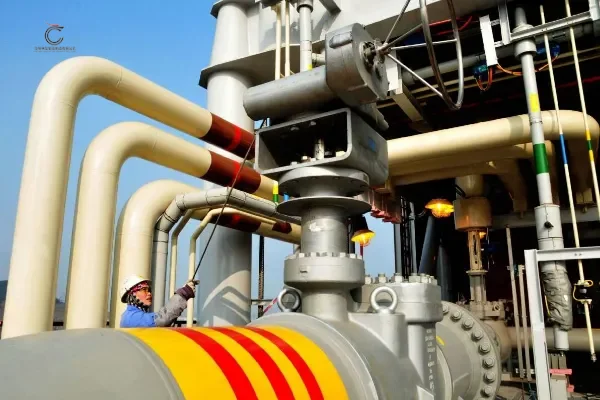Natural gas pipeline risk factors and preventive measures
Risk factors of natural gas pipelines
Under normal circumstances, natural gas is transported in a closed system. In the event of a system failure resulting in a leak of natural gas transported in custody, the natural gas mixes with air to form an explosive gas that reaches its explosive limit or occurs at the point of water a fire explosion will occur. The following describes the risk factors that lead to problems with natural gas pipelines.
1. Pipeline material defects or welding defects. Pipeline defects can mainly lead to a decrease in strength or fracture of the pipeline, poor construction quality, poor quality welded joints or perforated ends of the pipeline, resulting in insufficient strength of the pipeline to maintain safe operation requirements. This leads to natural gas leakage and constitutes a fire accident.
2. Wear and corrosion of the inner surface of the pipeline. Natural gas contains sand, rust, mechanical impurities, etc., which can wear the pipeline with the flow of air. The natural gas in the project contains C02, CO: acidic gas dissolved in water forms H:CO which is corrosive to metals. If the dew point of the water is not qualified or test tube pressure is not completely drying the water inside the pipe to produce corrosion, corrosion caused by serious damage to the pipeline, causing accidents.
3. Corrosion of the outer surface of the pipeline. As the outer coating of the pipeline in transport, construction damage. Without timely repair or can not meet the need for anti-corrosion, the failure of the pipeline cathodic protection system, the strong corrosive soil laid around the pipeline corrosion of plant roots lead to accidents. Gas pipeline near the influence of power lines, electrified railroads, oil pipelines and gas pipelines parallel or variable distribution facilities, easy to make the gas pipeline near the buried stray currents increase pipeline corrosion hazards, resulting in leaks, fires, explosions and other accidents.
4. Stress cracking. Residual stress exists in the pipeline manufacturing process, and there is a temperature difference between the pipeline construction temperature and the operating temperature, resulting in thermal stress along the axial direction of the pipeline, which may lead to pipeline rupture.
5. Pipeline put into operation. When the pipeline is put into operation, the pig release is not thoroughly dried and clean water remains in the pipeline, which will accelerate the corrosion of the pipeline, and the residues in the pipeline will accelerate the wear and corrosion products of the valves and equipment, increasing the risk of leakage.

Protective measures for natural gas pipelines
The main measures are
(1) control and eliminate sources of ignition;
(2) strict control of equipment quality, the choice of qualified worry too much, separator, flow, pressure, temperature instrumentation;
(3) the necessary pressure test of the pipeline before commissioning;
(4) regular inspection and maintenance of equipment and instruments.
(5) establish a no-fire zone in the station and post danger signs at the operation site;
(6) develop regulations and safety operation procedures, strict disciplinary processes to prevent accidental operations leading to natural gas leaks;
(7) insist on tour inspection, and deal with problems promptly.
(8) Before pigging clear injection water treatment, the solid waste should be cleaned up regularly and the iron content should be monitored.
Shenlong Pipe is the world's premier source of carbon steel pipe, oil & gas pipeline, seamless pipe, welded pipe, galvanized pipe, casing and steel fittings.






